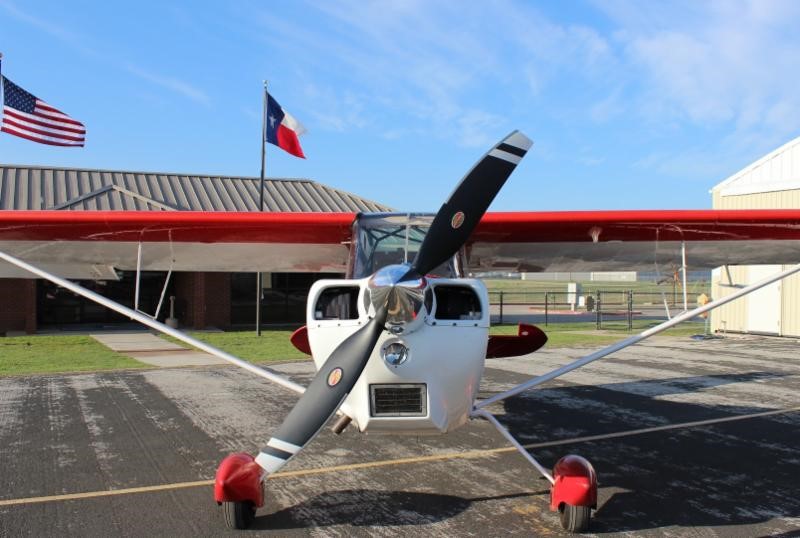
Although composite propeller designs have been around for decades, some aircraft owners and operators are still unsure about the difference between composite and metal propeller options. So today, we’re sharing the truth behind a few common misconceptions about composite propeller blades:
Those unfamiliar with composite blade technology may believe that traditional aluminum blades are stronger. But the truth is that composite blades are actually much tougher than aluminum blades, especially in unforgiving flying environments like the backcountry.
At Hartzell Propeller, we design our carbon fiber composite blades to be highly durable and impact resistant. The structural part of our composite propeller blades is constructed using a combination of aerospace-grade carbon fiber and/or Kevlar® materials for optimal strength and performance. We also use corrosion-resistant epoxy paints and protect the leading edges with a nickel-cobalt erosion shield for greater endurance and resistance against foreign object damage.
Although various propeller manufacturers create their own versions of composite blades, the specific construction techniques and technology behind their products are vastly different.
At Hartzell, we use both machine engineering and human expertise to produce our next-generation composite props. Unlike some other composite blades, our advanced structural composite propeller blades utilize a true composite structure to gain their strength and form.
Over the years, Hartzell has refined our proprietary composite engineering and manufacturing technologies, helping to reduce the formerly high cost of producing composite propeller blades and make carbon fiber propellers more affordable for today’s aircraft owners.
Switching to a composite propeller can result in significant performance advantages for your aircraft. Because composite propellers are so lightweight and strong, it’s possible to shape airfoils that are thinner, wider, and overall more aerodynamic than traditional aluminum blades.
Hartzell specifically engineers our composite props to deliver performance enhancements such as shorter take-off distance, better ground clearance, increased climb rate, increased cruise speed, and smoother operation. Composite props also offer significant weight savings over metal blades, helping to increase the aircraft’s useful load, reduce wear and tear on the engine, and can improve fuel efficiency.
One of the biggest benefits of switching to a composite prop is their durability, which makes them less likely to require repair. With aluminum blades, repairing minor damage such as nicks and gouges requires filing down permanent material to smooth out the airfoil. With repeated repairs, an aluminum prop will become thinner and thinner until it’s eventually deemed unairworthy.
Composite blades, on the other hand, are able to be repaired over and over again without adversely affecting the airfoil shape. Instead of filing or grinding the blade to remove material, composite blades are repaired by replacing the lost material. Hartzell’s composite props are certified for unlimited life and can easily be returned to factory specifications even after multiple overhauls. While it’s true that composite blades may require a higher initial investment than metal blades, they will offer exceptional value for aircraft owners over the long term.
Additionally, minor repairs to composite blades can often be made with only an A & P license. Check out our composite propeller maintenance videos for helpful tips on repairing minor damage to composite blades.
As you can see, composite propeller blades have much more to offer than enhanced ramp appeal! From weight savings to optimized performance to low life cycle costs that provide better value for the investment, it makes sense that composites are the prop of choice for many aircraft owners and OEM manufacturers.
Ready to learn more about Hartzell’s selection of advanced structural composite propellers? Get in touch with our team today and let us find the best propeller suited for your aircraft.